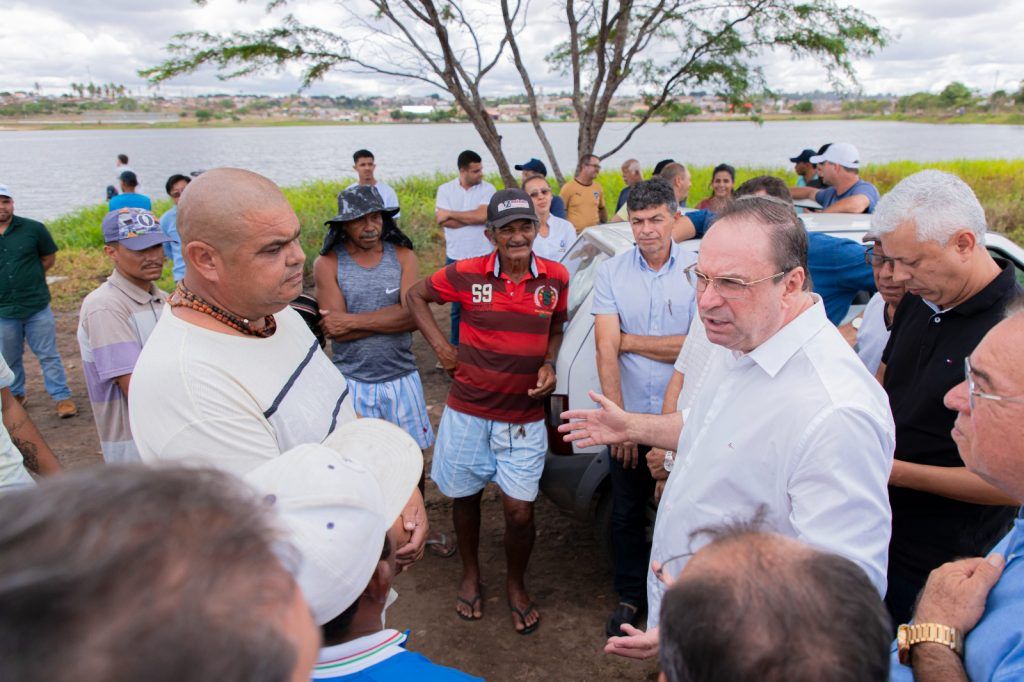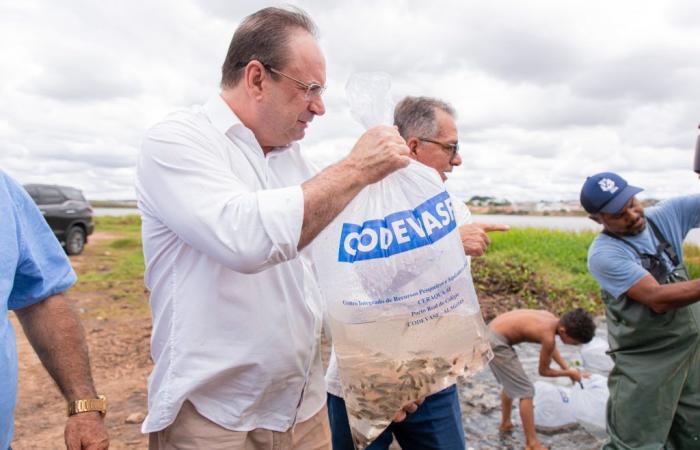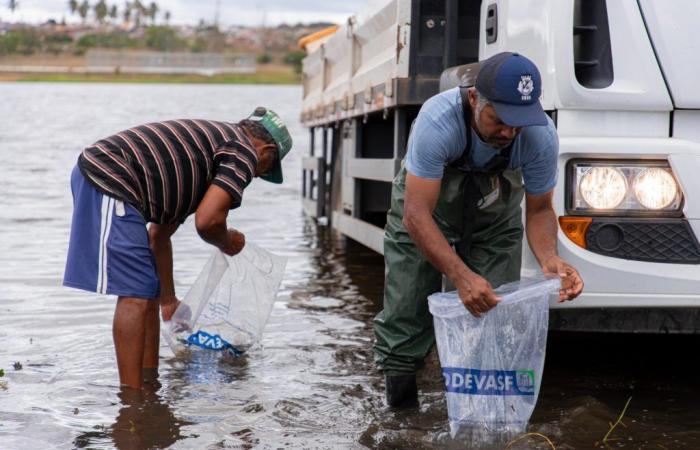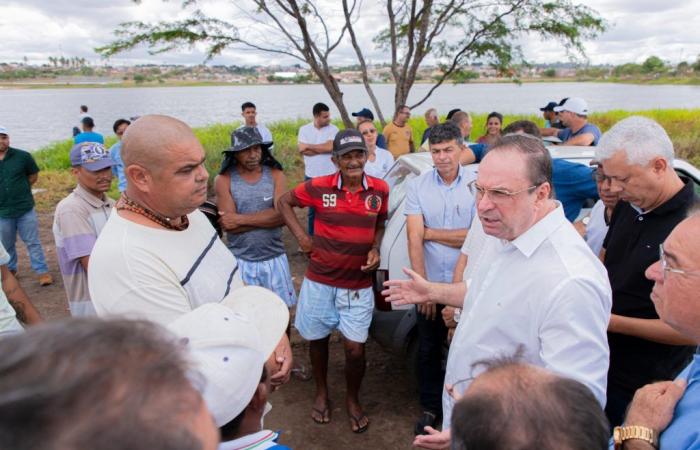Photo: Carlos Magno – Ascom Arapiraca
This Thursday (14), the City of Arapiraca, through the Secretariat of Rural Development, in partnership with Codevasf, carried out a fish harvest with more than 40 thousand fry in Lago da Perucaba. This is the first stage of the project, which will also include the Cangandu village and, in total, will populate the waters of Arapiraca with more than 145 thousand small native fish.
Among species such as Piau, Tucunaré and Tambaqui, the fry distributed in the lake are of great importance for maintaining the balance of the ecosystem, as they work to clean the lake in an organic way, and also to guarantee the livelihood of local fishing families, who can use them as a source of income or food.
“These fry help in the preservation and improvement of the families that live here, that is what we need to do in Lago da Perucaba, so I thank Mayor Luciano Barbosa for always being willing to care for and improve the lives of this community”, highlighted Secretary Genivaldo Oliveira.

The mayor followed the entire action and took the opportunity, together with the fishing colony, to renew the commitment to preserving the region. “For me, it is a pleasure to be placing these fry in Lake Perucaba, which will be used for this colony to fish and develop its family economy from the lake itself. This is an old community, it deserves all the attention from the city council and we will give it,” he said.
The fishermen showed their gratitude for the improvements that the mayor has made in the region and highlighted the importance of preserving the entire Lake, not only the surrounding environment, but also the new fish that populate the water. According to them, with conscious fishing by those who use the place, it is possible to catch fish weighing almost 20kg.
Tags: City Hall benefits fishing community fish fishing Lake Perucaba








